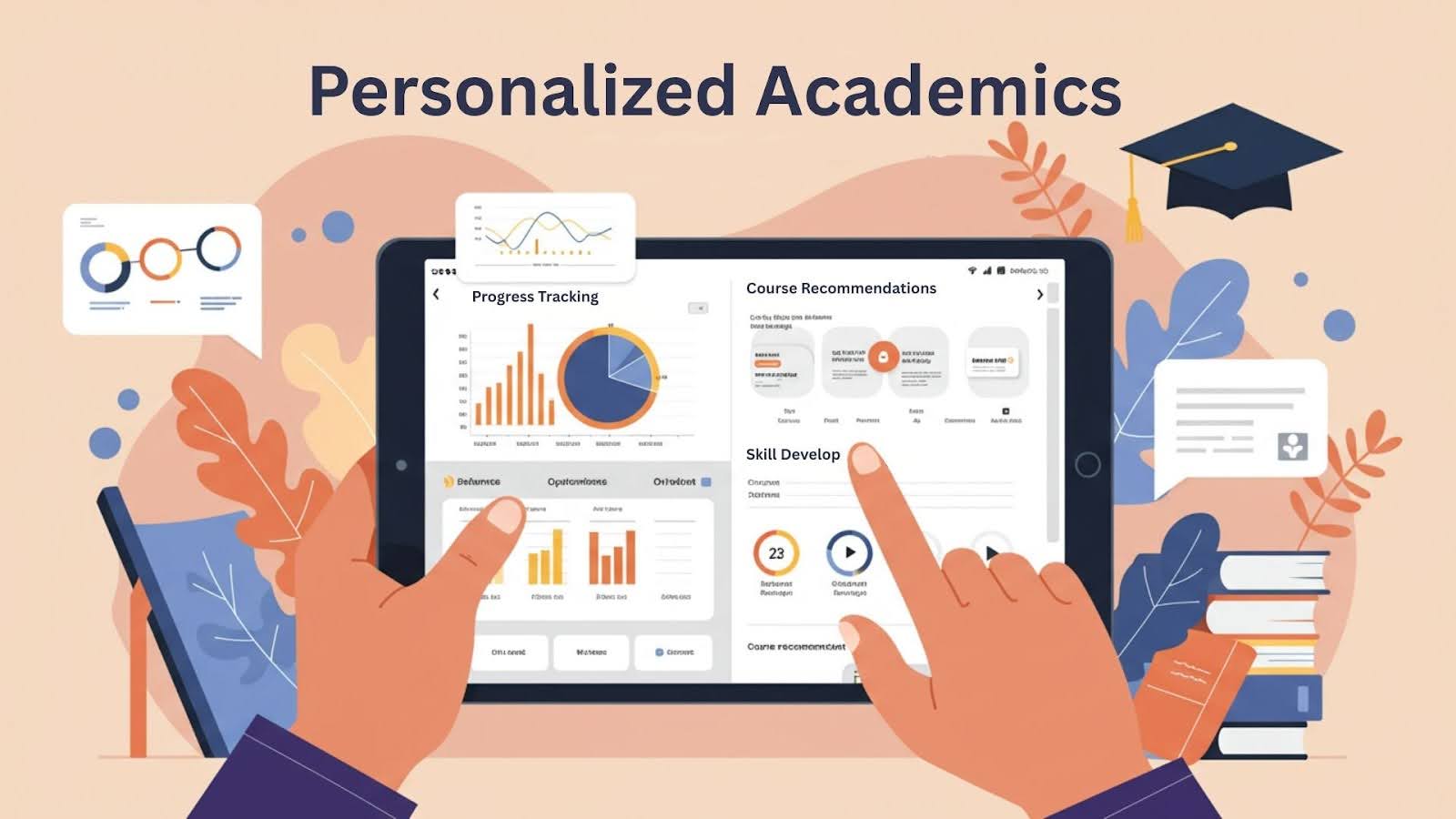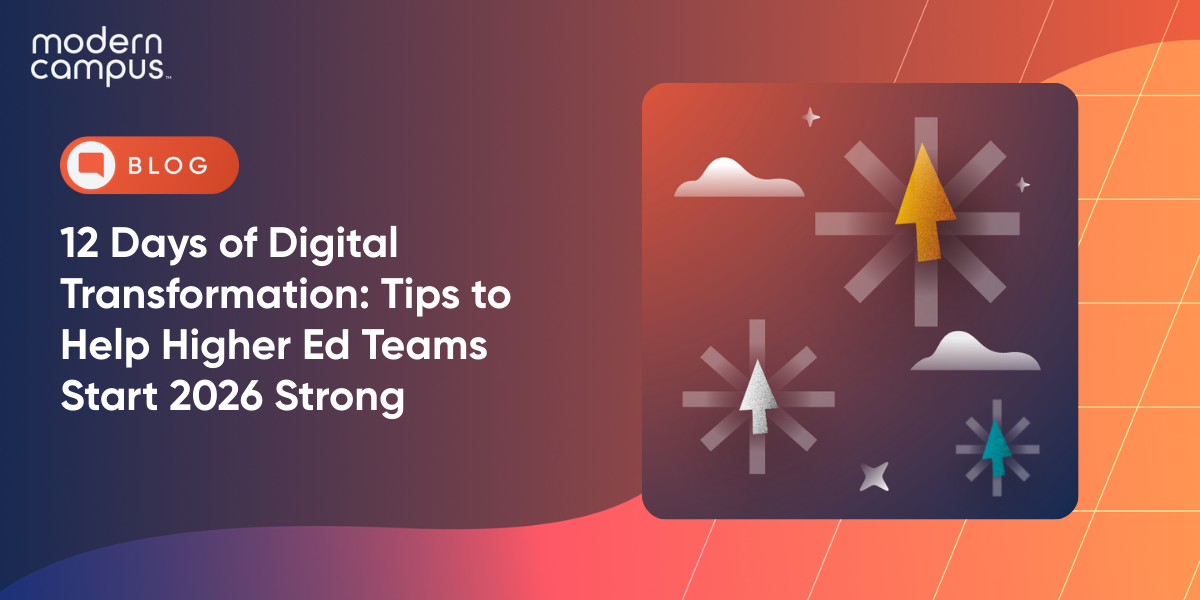Higher Education Curriculum Management Systems: The Key for Effective Educational Alignment
As industries evolve at record speed, universities are under immense pressure to ensure their academic offerings keep pace. Yet aligning courses, programs and outcomes with real-world skills remains a challenge, especially when institutional processes are siloed and paper-based. According to the National Association of Colleges and Employers, just 57% of college seniors in the Class of 2024 felt very or extremely well prepared for their careers, leaving nearly half uncertain about their next step. Higher education curriculum management systems help close that gap by enabling a connected curriculum that supports student success.
From initial lesson planning to ongoing curricular changes, modern curriculum management software gives universities the ability to develop, approve and implement academic updates with speed and precision. With features like integrated workflow tools, centralized curriculum repositories and real-time data dashboards, institutions can ensure alignment with workforce demands.
Why Higher Education Curriculum Management Systems Are Essential Today
Institutions are navigating shifting student demographics, evolving labor market expectations and growing pressure to demonstrate real-world outcomes. Traditional curriculum planning methods simply can’t keep up. Many universities are turning to higher education curriculum management systems. These tools empower educators, administrators and faculty to develop, align and maintain a curriculum that reflects both academic standards and workforce needs while eliminating inefficiencies and delays.
Aligning Curriculum With Workforce Demands
Students are increasingly career-focused, expecting their education to deliver measurable value in the job market. Yet, without a streamlined system to connect academic programs to industry needs, institutions often struggle to make curricular updates that reflect current skill demands. A course management system for higher education bridges this gap by making it easier to map courses and programs to desired learning outcomes and workforce competencies. When programs evolve in sync with labor trends, students graduate more prepared, and institutions earn a stronger reputation for employability.

These systems also help academic leaders assess how their curriculum stacks up against national standards or regional employer needs. By using curriculum mapping software, institutions can visualize gaps, identify overlap and make targeted improvements that align with educational goals and economic opportunity.
Responding to Evolving Student Expectations
Learners expect transparency, personalization and flexibility. A decentralized, manual approach to curriculum planning makes it difficult for schools to deliver. Curriculum management systems offer centralized visibility across programs and departments, ensuring that students get quick access to accurate, up-to-date information about their academic options.
Whether they're tracking degree progress or planning their next semester, students benefit from systems that are integrated with student information systems (SIS) and responsive to their individual goals. With the right technology in place, institutions can ensure that their curriculum not only meets accreditation standards but also supports the personalized, streamlined experience students now demand.
The Role of Curriculum Mapping Software in Creating a Connected Curriculum
Delivering a truly connected curriculum requires more than a well-designed course catalog. Consider seamless integration between learning objectives, assessment strategies and institutional goals. By visualizing how lessons, courses and programs build toward broader outcomes, institutions can promote alignment, reduce redundancy and ensure students receive a cohesive, meaningful education.
Enhancing Learning Outcomes Through Program-Level Visibility
Assessing learning outcomes across departments can be a fragmented process. Curriculum mapping software allows educators and administrators to view learning objectives at the course, program and institutional level, creating clear pathways for skill development and mastery. Students gain the competencies they need to succeed in a competitive workforce.
With a centralized view of outcomes, faculty can more effectively plan lessons that contribute to broader objectives, while administrators can identify curricular gaps that may hinder student success. The result is a more aligned, outcomes-driven academic experience that supports continuous improvement and long-term achievement.
Streamlining Approval and Revision Workflows
Making curricular changes, whether it's updating a course description or launching a new program, can be cumbersome. With curriculum management software, institutions can automate and standardize the approval process, reducing delays and minimizing human error. Faculty and academic teams can submit, review and approve updates within a unified system, enabling faster response to emerging trends or accreditation requirements.
By managing curriculum development within a centralized platform, institutions gain efficiency without sacrificing governance. Automated notifications, version control and digital audit trails keep everyone on the same page and ensure that all curricular changes are documented and aligned with institutional policies.
Building a Centralized Curriculum Repository for Cross-Team Collaboration
A decentralized curriculum can lead to inconsistencies, outdated information and missed opportunities for collaboration. A centralized curriculum repository serves as the single source of truth for courses, programs and learning outcomes. Faculty, staff and administrators gain quick access to the information they need to plan, assess and improve. With a unified system in place, institutions can ensure accuracy, reduce duplication and foster greater alignment across departments and campuses.

Breaking Down Silos Between Academic and Administrative Units
Academic planning is inherently collaborative, but without shared access to curricular data, departments often operate in silos. This disconnect can slow down decision-making, hinder approval processes and lead to miscommunication around program objectives. A centralized repository offers visibility into current courses, pending updates and approved changes, so every team can work from the same playbook.
By integrating curriculum management software with SIS and other key platforms, institutions can enhance communication and reduce manual handoffs. Faculty gain clarity on how their courses fit into the broader curriculum, while administrators can coordinate updates more efficiently across departments. Transparency supports better governance, faster implementation of changes and a more cohesive academic experience for students.
Curriculum Development Backed by Powerful Insights
Developing a curriculum that meets institutional standards and adapts to the evolving needs of students and industries is no small task. But with the right tools in place, educators and administrators can approach curriculum development as a strategic, data-informed initiative. Higher education curriculum management systems equipped with robust reporting and analytics provide the powerful insights needed to make confident decisions and continually refine offerings.
Using Data to Drive Curricular Improvements
Continuous improvement in higher education depends on access to actionable insights. Whether tracking student success metrics, assessing demand for certain courses or evaluating learning outcome achievement, institutions need a clear picture of what’s working and what isn’t. Curriculum management software transforms fragmented data into meaningful reports that inform academic planning.
Faculty and administrators can use these insights to identify underperforming programs, uncover unmet student needs and optimize course sequences. Instead of relying on anecdotal feedback or outdated surveys, academic teams can confidently update curricula based on enrollment patterns, completion rates and market trends.
Monitoring Trends in Enrollment, Engagement and Completion
Staying competitive means understanding how students interact with and progress through academic programs. Advanced curriculum systems integrate with SIS and learning management tools to track engagement, course selection behavior and degree progress in real time.
These capabilities allow institutions to monitor how curricular changes impact student success. They can measure which courses attract the most students and which pathways lead to timely completion. By surfacing these patterns early, administrators can adjust offerings, improve alignment with learning outcomes and better support students in achieving their academic and career goals.
Benefits for Institutions, Staff and Students
Higher education curriculum management systems are catalysts for institutional transformation. By streamlining workflows, improving collaboration and surfacing critical data, these systems deliver wide-ranging benefits for faculty, staff and students alike. From increasing operational efficiency to enhancing student engagement, modern curriculum tools help institutions create a more dynamic, personalized and responsive educational experience.
Enabling Personalization and Flexibility in Academic Pathways
Students expect education that adapts to their goals, schedules and learning styles. A connected curriculum supported by advanced management software offers clear, customizable academic pathways. With quick access to up-to-date course offerings, aligned learning outcomes and flexible scheduling options, learners can make informed decisions and stay on track toward timely program completion.
Integration with SIS and advising tools allows institutions to offer tailored guidance based on a student’s progress, interests or career objectives. Personalization improves student satisfaction while boosting retention and completion rates by ensuring every learner feels supported at every step.

Freeing Staff to Focus on Innovation Over Administration
Manual processes and outdated systems eat away at time and energy that could be spent improving the student experience. Curriculum management software empowers academic staff by automating routine tasks like managing approvals, updating course data or coordinating between departments.
Faculty and administrators gain time to engage in curriculum development, assess learning outcomes and collaborate across programs rather than getting bogged down in paperwork and system silos. When staff are freed to innovate, the entire institution benefits, elevating teaching, learning and strategic growth across the board.
Ready to Align Curriculum and Outcomes at Scale?
Curriculum alignment is the foundation of a modern academic experience. As institutions strive to stay competitive, meet evolving student expectations and deliver measurable career outcomes, curriculum management systems have become an essential part of the strategy. With the right tools, your team can streamline curriculum development, respond swiftly to market demands and empower students with clear, personalized learning pathways.
At Modern Campus, we specialize in helping institutions like yours implement curriculum management software that drives meaningful impact, from improved collaboration and quicker approval processes to enhanced learning outcomes and student engagement. We're here to help you stay ahead of the curve and support lifelong learner success. Let’s start building a smarter, more connected curriculum together.
Last updated: April 16, 2025



